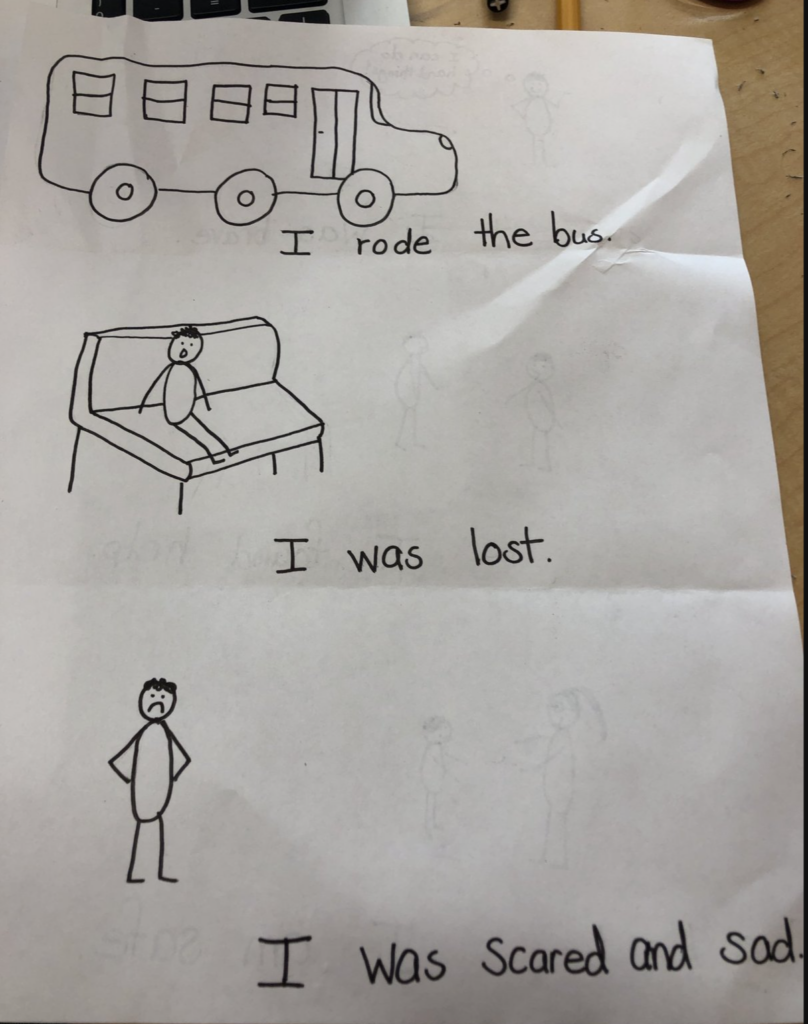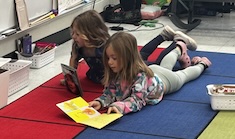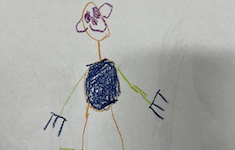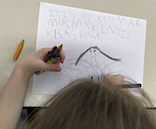“Miss Masse,” Philippe said, looking at me with tears streaming down his cheeks. “I waked up on the bus and it was cold and nobody was there, and the door, it wouldn’t open and I was so scared. But I telled myself, ‘I can do hard things,’ a lot of times, and I used all my muscles and opened the door. I look and look for grown-up and she not know what I say, but I say you, and she find you and they bring me to you.”
I looked at this sweet, scared little boy, in awe of his ability to retell this narrative of his morning…and simultaneously in awe of how he was able to navigate such a scary thing so independently. I was in shock thinking about how this could have happened. How did my student get left on a bus for a chunk of our morning and no one knew until he found help himself? Not to worry—much investigating and follow-up happened in that regard.
In our classroom realm, though, I had a very anxious English language learner not feeling safe in this place that wasn’t familiar to him. Philippe had come to me a couple of months before, having been in multiple schools in multiple states, never one place for long, until landing in Maine. His family was supportive, grateful, and truly invested in their children’s education. Philippe had a personality that filled the room. He lit up every crowd, made everyone feel welcome, and befriended every creature, big and small.
Getting left on the bus shook him to his core, and yet, he had still figured out what to do. I had to find a way to harness the gumption he used to figure out what to do to be able to help him conquer his new anxiety. As I held Philippe in my lap, I began to retell the story of his morning through a lens of strength and empowerment for his young brain to take ownership of.
“You were so tired and you fell asleep on the bus… It’s okay to be tired.
“You woke up and no one was there. That was scary… It’s okay to be scared. I would have been too!
“You thought, I have to find help!, so you tried to get off the bus, but the door wouldn’t open. You remembered that you can do hard things, you reminded yourself, and buddy, you did it!
“Then you found a grown-up and asked for help.
“The grown-up got you to school and you are safe with me.
“You were so brave and used your brain and your heart to help you know what to do!”
I told him over and over until he started repeating it back to me. His friends had gathered around, reassuring their typically jubilant friend. They cheered as we told the end of the story each time. I mean, it really was incredible that this little five-year-old had managed to navigate this situation with not much English or American life experience!
Philippe settled in for the day… but as we approached dismissal, I saw his anxiety spike again and decided to make him a quick social story that matched the narrative I had told him that morning to reference if he needed.


When his bus was called, he gripped his social story with all his might and, with tear-filled eyes, hugged me, told me he loved me, and marched down the hall to the bus. I called to make sure he made it home safe… and he did… that day, and every day after that.
This story could have ended in so many other ways. But it didn’t. Philippe had it in his head that he could do hard things. This is something we had intentionally built into our thinking in our classroom. He was faced with a real-life, scary problem, and while he certainly had age-appropriate fears and anxieties as he navigated and then recounted the experience, he was able to do it successfully. His mindset of being a problem-solver who does hard things kept him safe and got him help. It empowered him to do what needed doing and allowed him to slow down and do it.
When he needed reassurance as he entered his safe space in our classroom, I was able to use the power of intentional storytelling to remind him of his wisdom, strength, and bravery. The narrative I told Philippe allowed him to regulate, process, and grow from the experience.
Many pieces of this story are the result of intentional work that we had been doing all year. From moment one in our class, we identify problems, make plans, make mistakes, and try again. We talk about the difference between hard things and bad things. We talk about how hard things are worth doing, and how it can take several tries before we find solutions to the problems we face. From the earliest moments together, we told stories, we shared experiences and wrote about them, we lived in story together.
When Philippe faced a hard and scary situation himself, he had what he needed to take a deep breath, remember he’s solved many hard things in the past, and think of a possible solution. Not only do these skills help Philippe be the best learner and friend he can be in school, but they have influenced him as a person in our world. They allow him to be a solution-focused community member, willing to do hard work, and confident in his abilities at the mere age of five.
The power of story, the power of mindset, the power of community did this for him. Even in kindergarten we can do big things. Sometimes in kindergarten, we do some of the biggest things… and if this is what we can do now, imagine what we can do in the next decade, in our lifetime.






